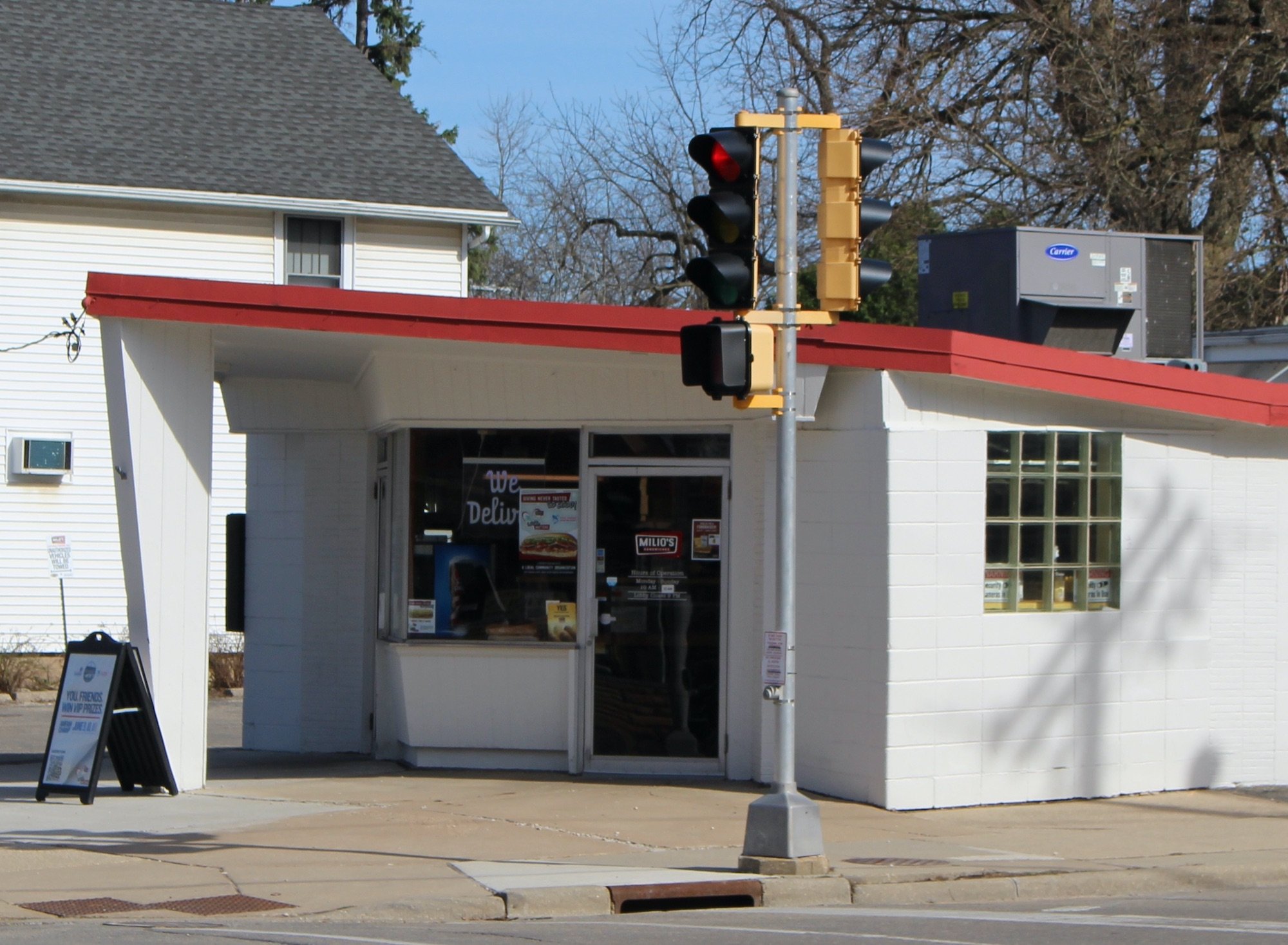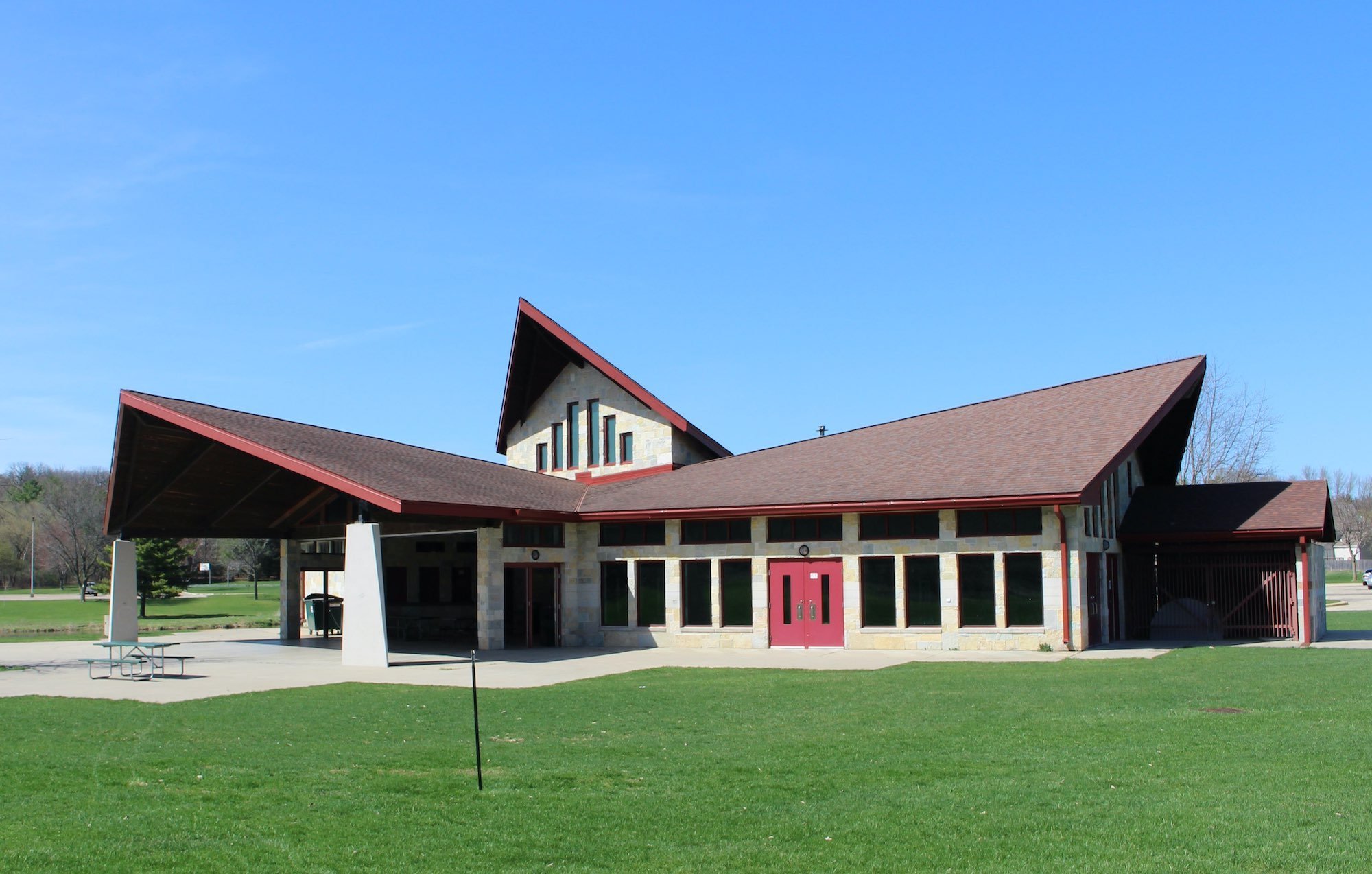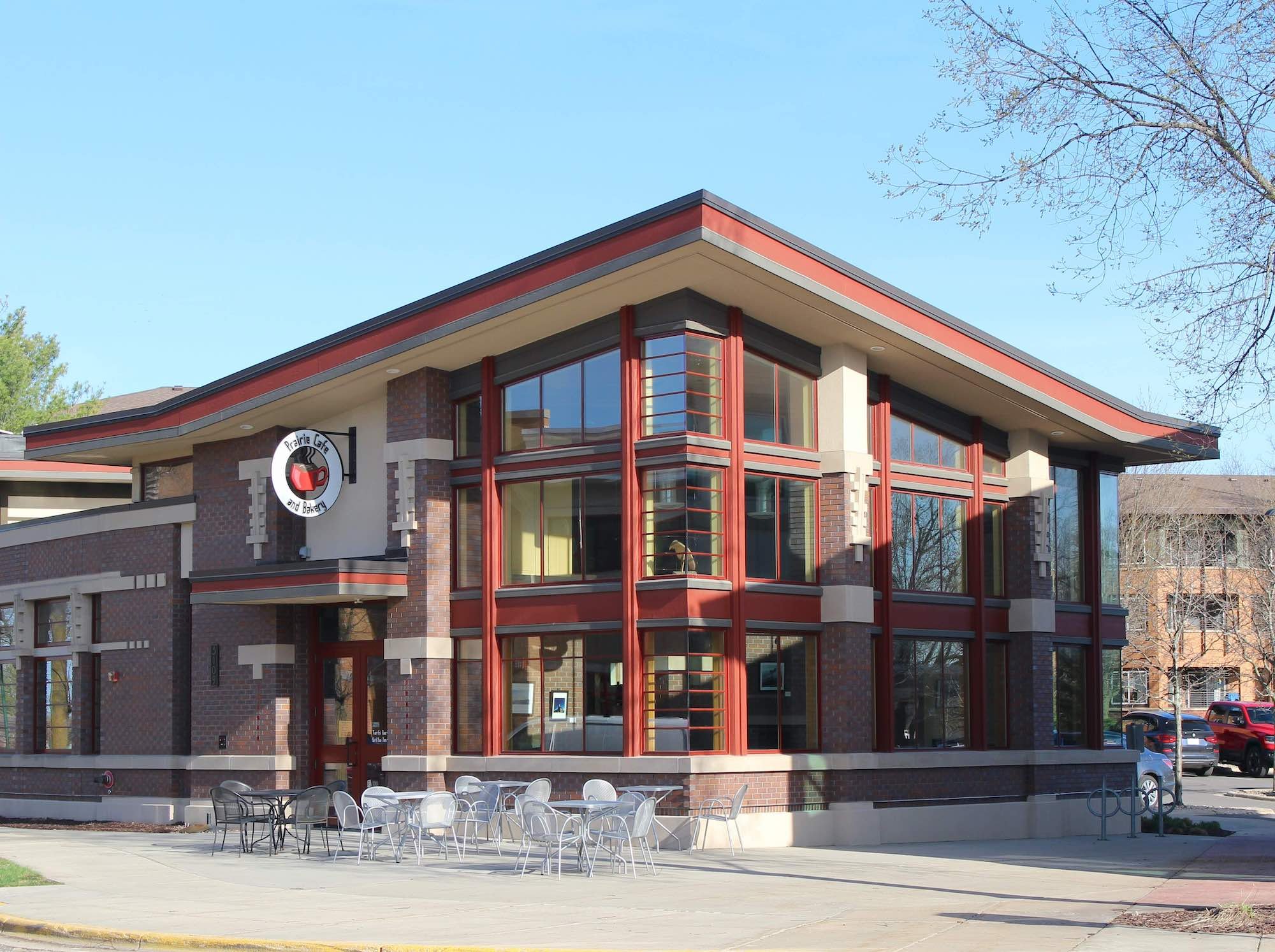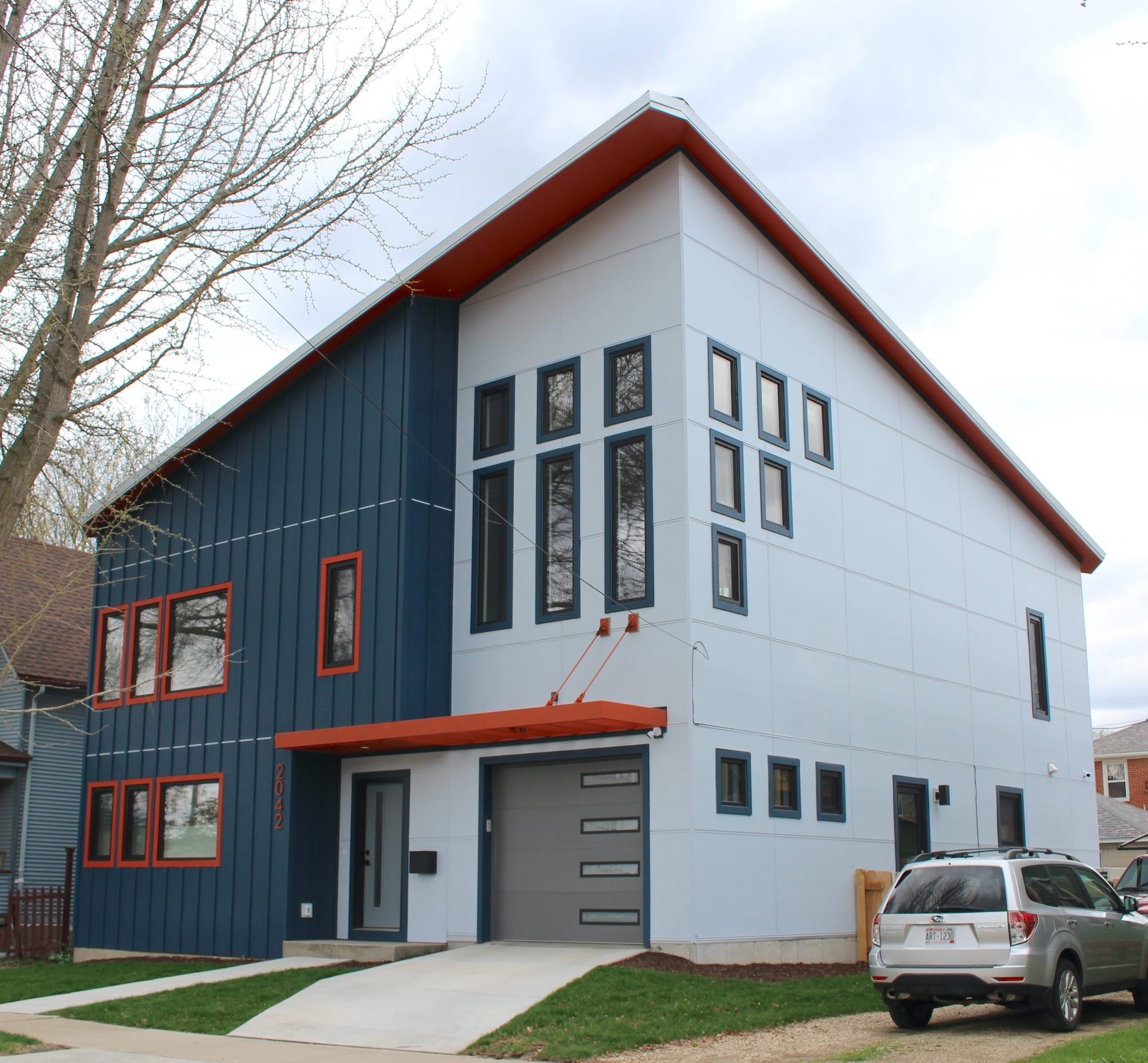Prow Roofs 2 | Places to Live, Work and Play
by Michael Bridgeman
The prow roof saw widespread use in the years following World War II, projecting an image of the modern in a country energized by unprecedented growth. At their most exuberant, prows that soar evoke the Jet Age, while more commonplace uses demonstrate the adaptability of the form. Last month I focused on places of worship and this month I turn my attention to the prow roof in residential, commercial, and recreational applications.
Two early prow roofs in Madison date to the first decade after World War II. The Henry T. Wilson House (921 S. Midvale Blvd.) was built in 1951 to a design by Herbert Fritz. Jr., an architect who frequently used prow roofs including hyperbolic paraboloids later in his career. At less than 1,000 square feet, the Wilson house is small yet seems expansive with its straight prow rising above a right-angled wall of glass. Another early local example dates from 1956. It’s a tiny commercial building (2145 Regent St.) that began as the Kwik Shake Inn and soon became a dry-cleaning outlet. This prow with its slight upward tilt is supported by a tapered column, thus precluding an expensive cantilever. The building has now returned to food service as a Milio’s sandwich shop.
The 1960s were a good decade for prow roofs. The Louise O. Kloepper and Mary A. Lescohier House (1621 Capital Ave.), built in 1963, is decidedly Wrightian, and for good reason. It was designed by William Wesley Peters, who joined Wright’s Taliesin Fellowship in 1932 and became head of Taliesin Associated Architects, the firm created to carry on Wright’s legacy after he died in 1959. The angled muntins in the glass prow are reminiscent of those at the First Unitarian Society Meeting House. A house in Windsor (4519 Maple Lane) captured the essence of the contemporaneous prow-roofed house when it was built in 1968 by Michael F. Simon Builders. The prominent projecting roof extends over a porch that wraps around the acute angle of the living room space.
By the 1960s, the prow roof had been adapted and tamed by builders selling ranch houses and its variants. The house at 713 Valley Road in Madison is a raised ranch built in 1966 with two prow roofs. Facing the street is a what I call a full prow: a projecting roof that mimics the obtuse angle of the façade under it. The expansive glass tells us that this is a primary living space. The perpendicular section over the garage has a less pronounced prow over a flat façade. This kind of “winged gable” appeared by the mid-1950s and was widely used for several decades. The 1960 house at 4710 Keating Terrace shows a typical winged gable treatment on a split-level residence.
If the winged gable is at the timid end of the prow roof spectrum, then the batwing is at the bold end. Batwing (or “gull wing”) roofs were largely a commercial phenomenon, especially for gas stations looking to catch the eye of passing motorists. In our area, a historic photo shows an abandoned station north of Edgerton (414 Albion Road) that was built to a standard 1960s configuration for Phillips 66. The batwing prow, supported by a pair of metal posts, was clipped about 20 years ago; Google street view offers a more recent look. An identical Phillips 66 station near the intersection of State Highway 60 and Interstate 39-90-94 met a similar fate only a few years go and today stands wingless. You can easily explore these now-classic designs, some more daring than the Phillips 66 stations, by Googling “batwing gas station.”
Recreational buildings are often playful which lends them to energetic forms like prow roofs. The clubhouse at Glen Golf Park (3747 Speedway) has an “eyebrow” prow with windows that bring daylight into the interior of the small structure. Angled prow roofs extend in multiple directions at the Elver Park shelter (1260 McKenna Blvd.) to give it a lively appearance. The building opened in about 1982.
The Warner Park Community Recreation Center (1625 Northport Dr.), which was dedicated in September of 1999, has a complex roof with slopes at multiple angles and planes that overlap. Still, the most visible prow roof is over the sign at the entrance to the recreation center parking lot. Another recreational building in Madison—the multi-prowed shelter at Garner Park—will be the subject of a future post.
Two more recent buildings show that the prow roof continues to be a viable form given the right designer, client, and circumstances. The Prairie Café and Bakery (3109 Pheasant Branch Road, Middleton) moved to its current building in 2015. Destree Designs Architects employed Neo-Prairie motifs that abound at Middleton Hills for this multi-use building. The glassy right angle of the restaurant becomes a prow with a soaring roof that extends beyond the facades. The house at 2042 E. Main St. also turns a right angle into a prow by virtue of the roof that tops it, even though it doesn’t come to a simple point. Here the walls use less glass than many prows. The design vocabulary and materials communicate that this is a recent building; it was completed in 2022.
Even a Little Free Library (2880 University Ave.) has a prow roof. Writ small or large, the prow roof is a motif that continues to capture our attention and express our sense of the modern.
Image Credits
[1] Phillips 66 Station, Town of Albion. WHS Architecture & History Index #124621
All other uncredited photos by Michael Bridgeman.







![Phillips 66 station, Town of Albion [1]](https://images.squarespace-cdn.com/content/v1/5c40df4ef93fd497c87fd880/1685480424412-62JA7RVNJXQ0JA51K4V4/Phillips+AHI+124621+copy.jpg)






